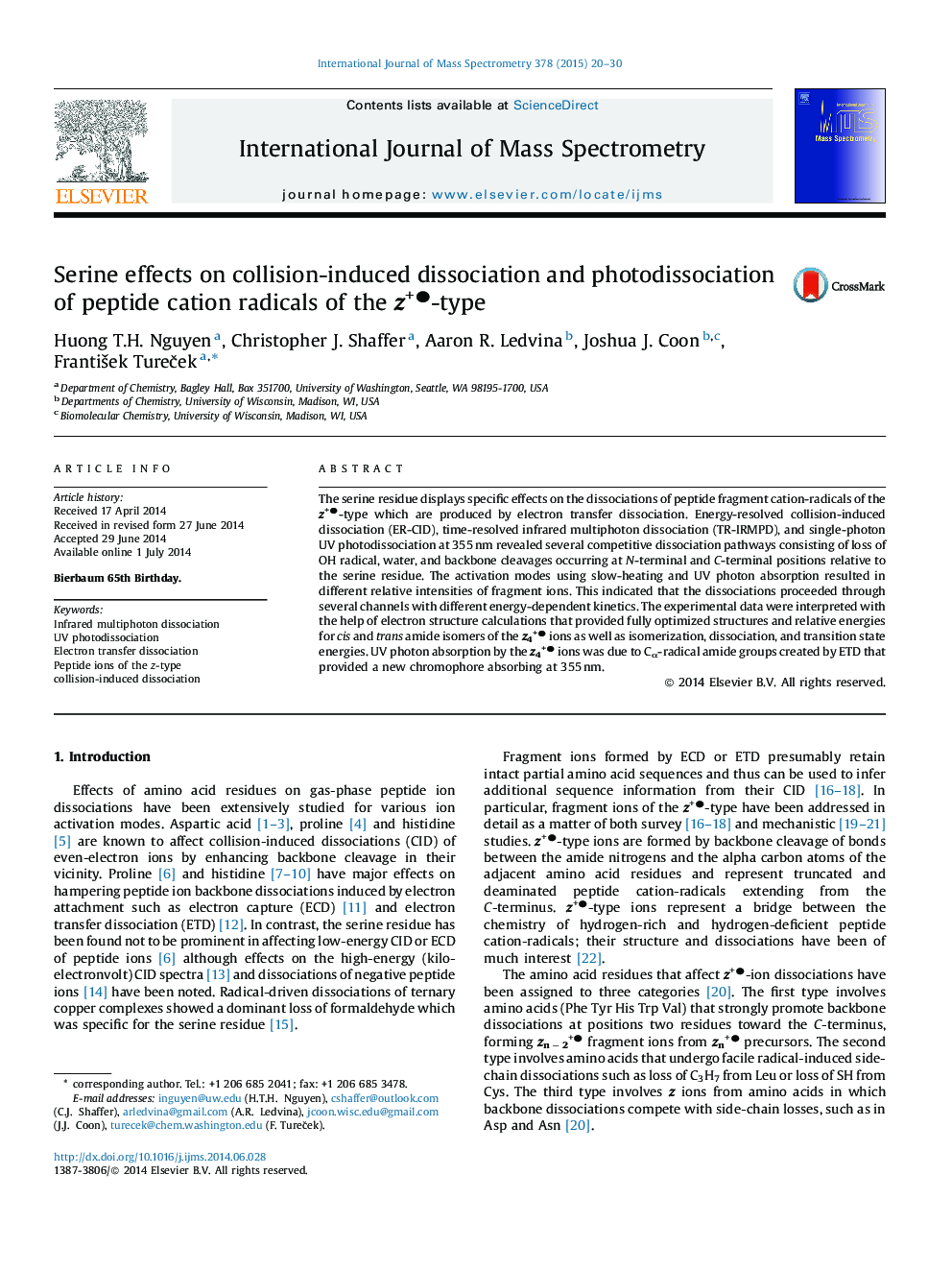| Article ID | Journal | Published Year | Pages | File Type |
|---|---|---|---|---|
| 1192076 | International Journal of Mass Spectrometry | 2015 | 11 Pages |
•Serine peptide cation-radicals of the z-type were studied.•Energy-resolved collision-induced dissociations are reported.•CID is compared with time-resolved infrared multiphoton dissociation.•z-type peptide cation-radicals undergo photodissociation at 355 nm.•Structures and energies of intermediates and transition states were calculated.
ABSTRACTThe serine residue displays specific effects on the dissociations of peptide fragment cation-radicals of the z+●-type which are produced by electron transfer dissociation. Energy-resolved collision-induced dissociation (ER-CID), time-resolved infrared multiphoton dissociation (TR-IRMPD), and single-photon UV photodissociation at 355 nm revealed several competitive dissociation pathways consisting of loss of OH radical, water, and backbone cleavages occurring at N-terminal and C-terminal positions relative to the serine residue. The activation modes using slow-heating and UV photon absorption resulted in different relative intensities of fragment ions. This indicated that the dissociations proceeded through several channels with different energy-dependent kinetics. The experimental data were interpreted with the help of electron structure calculations that provided fully optimized structures and relative energies for cis and trans amide isomers of the z4+● ions as well as isomerization, dissociation, and transition state energies. UV photon absorption by the z4+● ions was due to Cα-radical amide groups created by ETD that provided a new chromophore absorbing at 355 nm.
Graphical abstractFigure optionsDownload full-size imageDownload high-quality image (100 K)Download as PowerPoint slide
